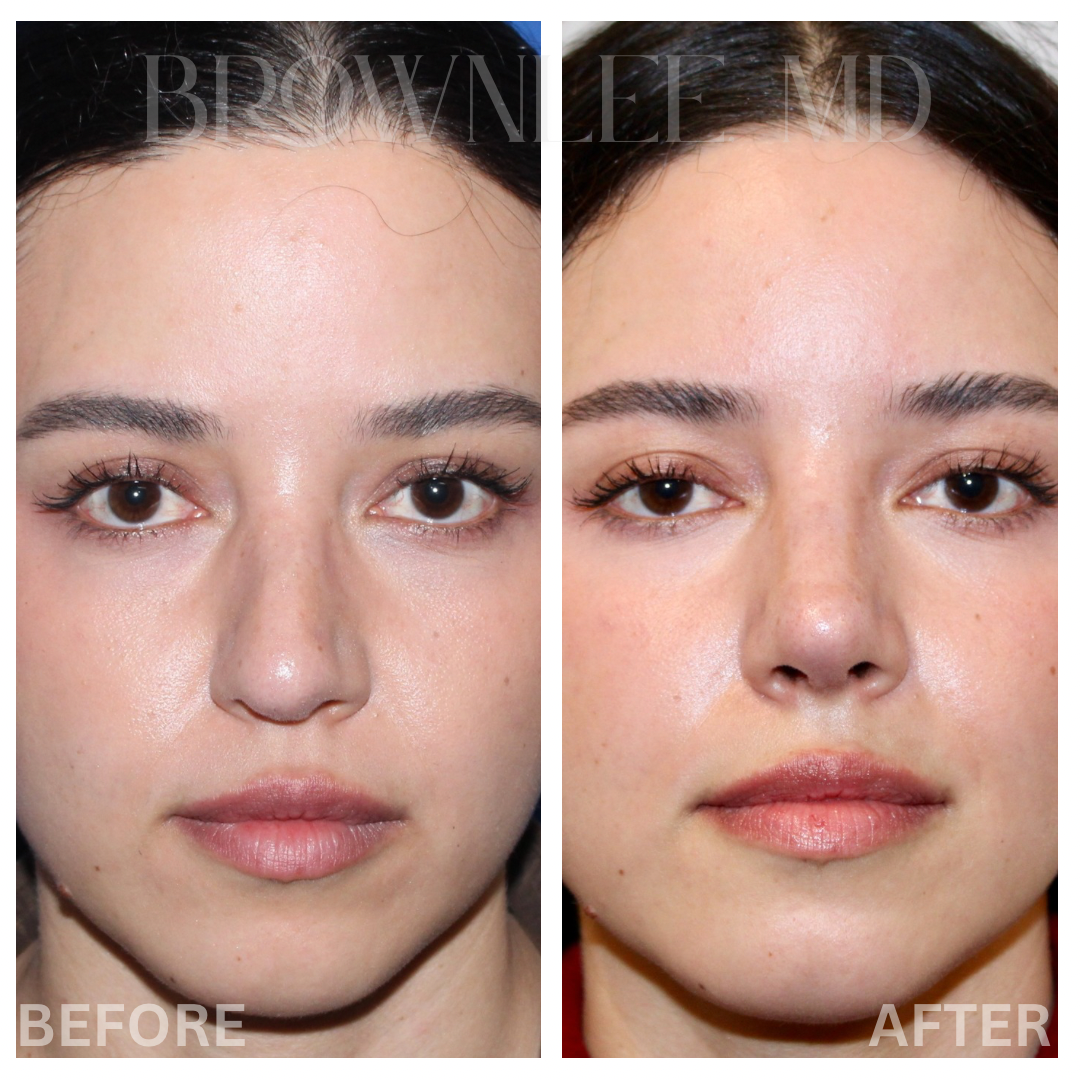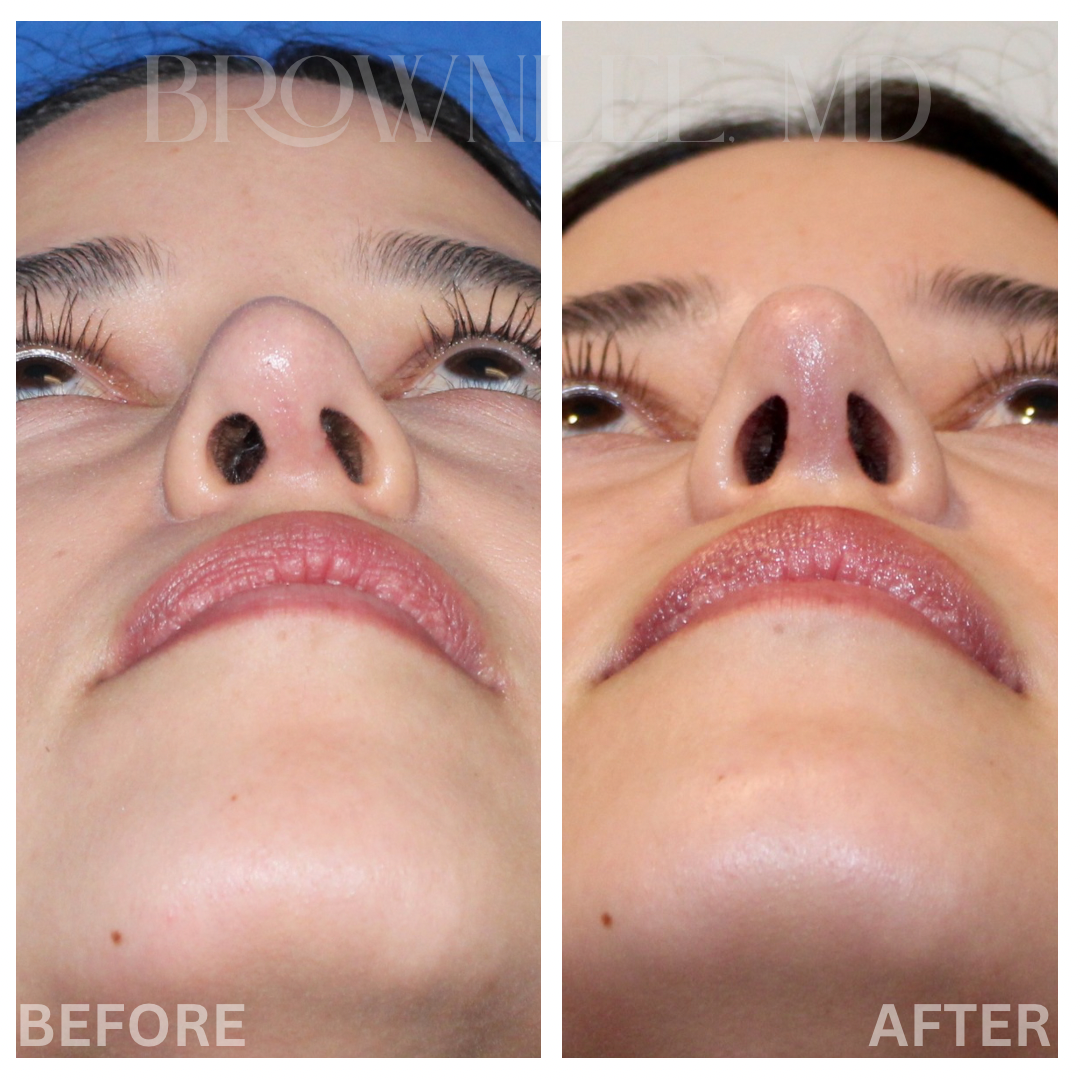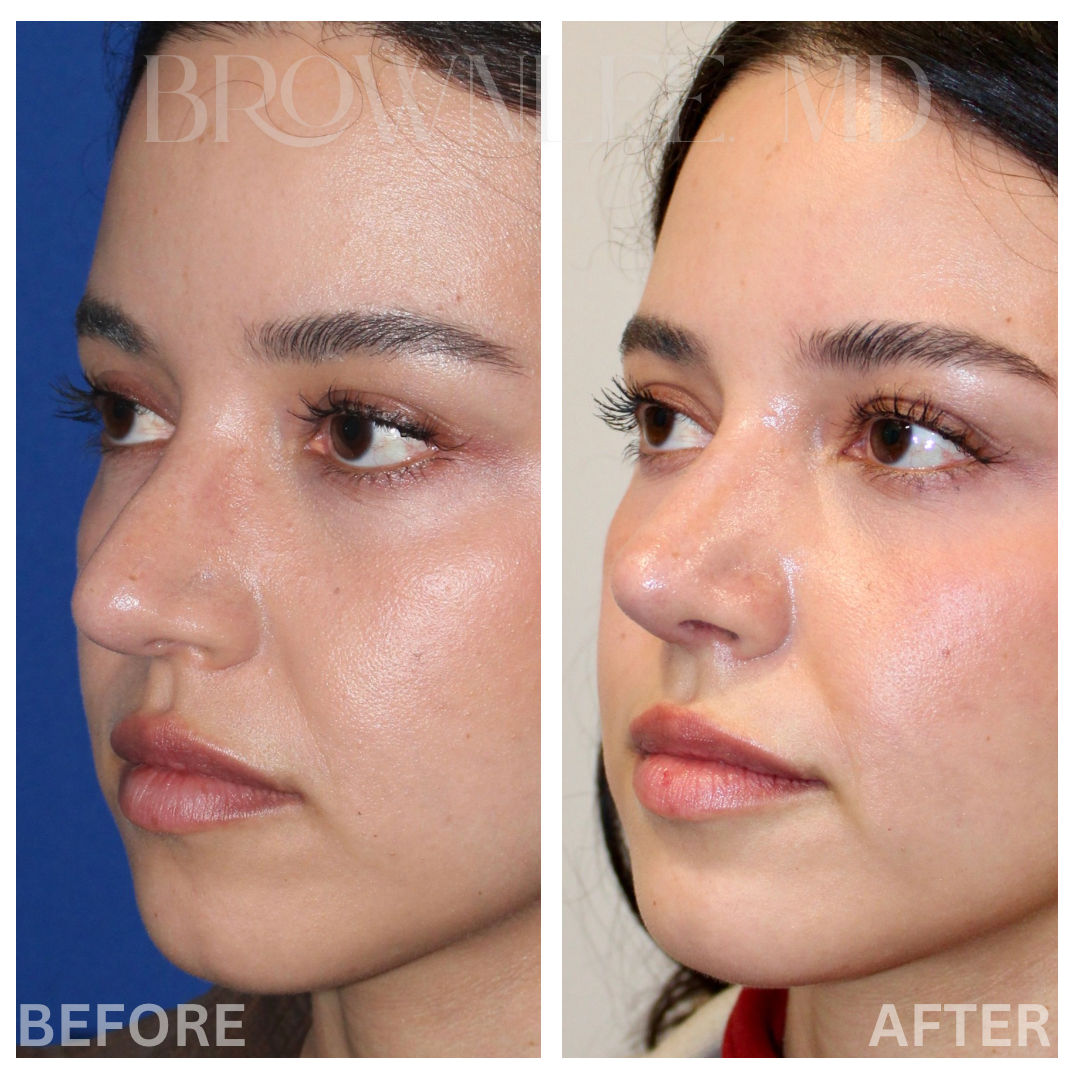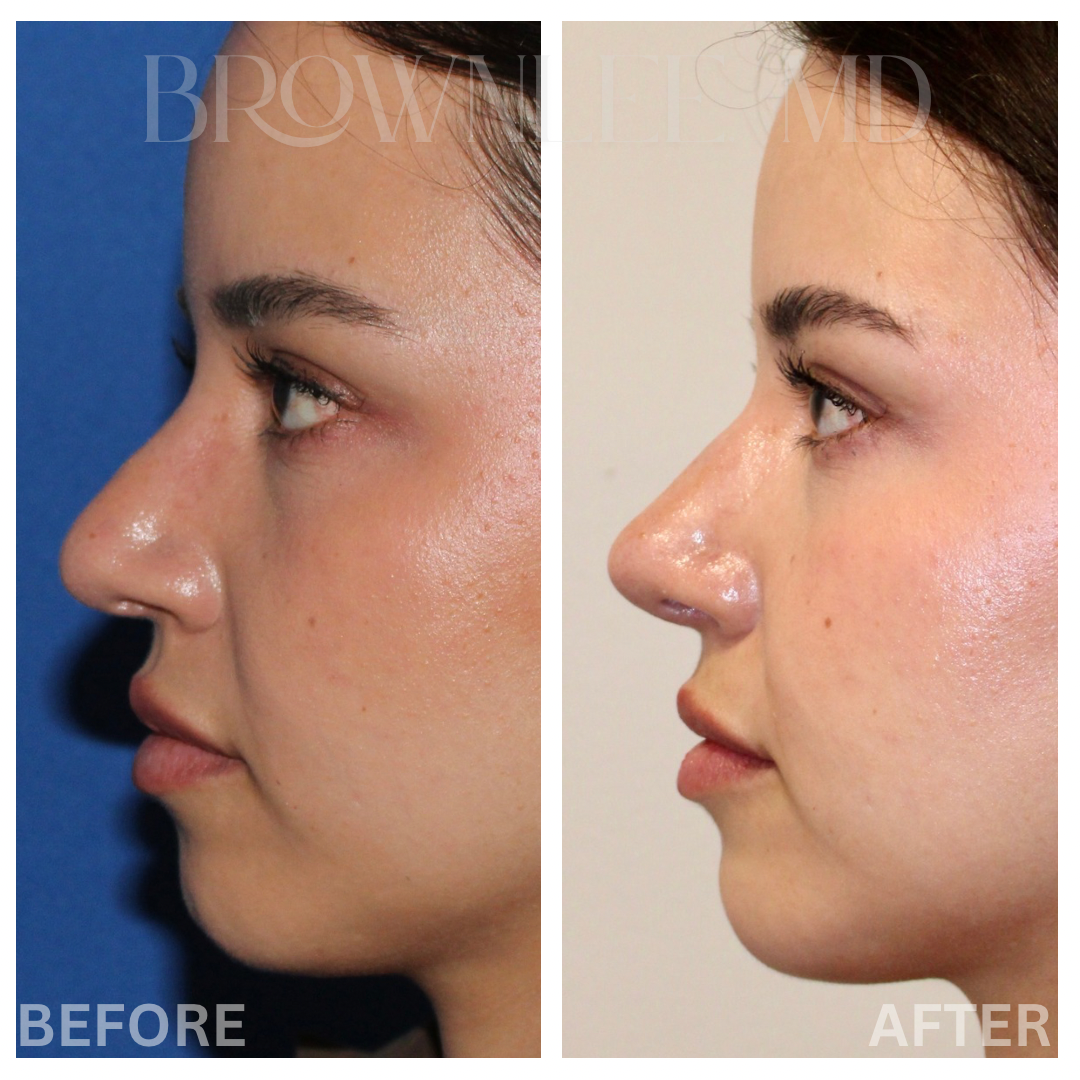Rhinoplasty, sometimes called a “nose job,” is an outpatient surgery that can improve breathing or change the shape of the nose. A functional rhinoplasty helps patients breathe better, while a cosmetic rhinoplasty improves the appearance of the nose. Often, patients benefit from a combination of both.
Although Dr. Brownlee’s practice encompasses the full breadth of facial plastic surgery, his true passion lies in performing rhinoplasty. As one of the only surgeons in Tulsa who is fellowship-trained in this procedure, he strives to provide natural, refined results that are individualized to the patient and their specific needs.




What Are the Most Common Reasons for This Procedure?
- Breathing through the nose is difficult
- Severely deviated septum requires correction
- Cosmetic reshaping of the nose
- Reconstruction after a nasal fracture or other trauma
During rhinoplasty, the nose is carefully reshaped while keeping your facial features balanced. For functional cases, this may mean straightening a crooked septum (the wall between your nostrils), opening collapsed areas, or correcting past injuries that make breathing difficult. For cosmetic cases, this might mean making the nose smaller, straightening a bump, or refining the tip. No two noses are the same, and every patient’s surgery is planned to fit their face and goals.
In some cases, cartilage from other parts of the body, such as the ear or the rib, is used to help rebuild the nose and provide additional support. Recovery usually takes a few weeks, and most people can return to normal activities after about one to two weeks; however, the full healing process takes one year. Whether your reason for surgery is cosmetic, functional, or both, the goal is to help you feel more confident and breathe more easily while keeping your results natural and balanced.
Procedures
- Primary Rhinoplasty
- Revision Rhinoplasty
- Male Rhinoplasty
- Feminizing or gender-affirming rhinoplasty
- Functional Nasal Surgery (Deviated Septum, Nasal Valve Collapse)
- Tension Nose / Saddle Nose Reconstruction
- Septal Perforation Repair
- Rhinophyma Excision
What Happens During the Procedure?
- Anesthesia: To ensure your comfort during the procedure, general anesthesia is administered so that you are completely asleep during the case.
- Incision: The surgeon makes a small incision inside the nose or across the skin that separates the nostrils. This allows access to the bones and cartilage that support the nose, and typically heals as an imperceptible scar.
- Reshaping: The surgeon reshapes the internal structure of the nose to achieve the desired appearance or functionality. This can involve removing bone or cartilage, or adding tissue (from another part of the body or using a synthetic filler).
- Final Touches and Closure: After reshaping, the tissue and skin are redraped over the structure of the nose. The surgeon then closes the incisions. An external dressing and internal splints are placed in most cases, and remain in place for one week.
What To Expect After Surgery
If you wear glasses, you may not be able to wear these for up to 1 month after surgery to avoid placing pressure on your nose. You may wear contacts after surgery. For those who require glasses, there are commercial headbands available that you may purchase online. We recommend one called NoseComfort (www.nosecomfort.com).
If you use CPAP, you may not be able to use this for up to 1 month after surgery to avoid placing pressure on your nose, or potentially open your nasal incisions.
The First Week After Surgery
- Apply Vaseline or Aquaphor on a Q-tip to the incisions under your nose/nasal vestibule and any exposed stitches AT LEAST three times per day and as needed. If you have a dressing in your ear, keep it dry in the shower.
- Spray the inside of your nose with saline spray AT LEAST three to four times per day, and as needed.
- You may need to sleep elevated on pillows to drain the swelling in your face and prevent blood from running down your throat at night. Swallowing blood can make you nauseated.
- Ice packs made from 4 x 4 gauze pads soaked in a bowl of ice, OR lightweight gel ice packs, can be applied to the forehead, eyes, and cheeks to decrease swelling and discomfort as needed. Apply for 20 minutes and then take a 40-minute break. Repeat as needed. Do not lay them on the nasal dressing.
- If you need to sneeze, you must keep your mouth open. No nose blowing for three weeks following surgery.
- You may bathe or shower but should keep the nasal cast and dressing dry. This can be done with a detachable shower wand or a special face shield that keeps water off your nose. You can purchase face shields at many places, but we recommend the face shield sold online at www.nosecomfort.com.
- You may wash the face gently with warm water, mild soap and a washcloth, while avoiding the nasal dressing.
- Your nose will feel stiff and will be numb in areas, especially in the tip.
The Second Week After Surgery
- We will see you in the clinic about one week after surgery to check your nose and remove any nasal dressing, cast or internal splints. All external stitches will dissolve in about seven to ten days and do not need to be removed.
- You may get your nose wet in the shower, and you may wash your nose gently.
- You may not blow your nose, but rinse it with saline and sniff gently. You may begin blowing your nose three weeks after surgery.
- Your nose will feel less stiff once the cast is off and the splints are out, if they were used. The tip may still have numbness. This will take several weeks to months to resolve. There will still be nasal swelling, especially in the tip. This will take weeks to months to resolve.
- Full healing is usually completed within one year after surgery.
If you want to learn more or schedule a consultation with Dr. Brownlee, call us today at (918) 492-3636.